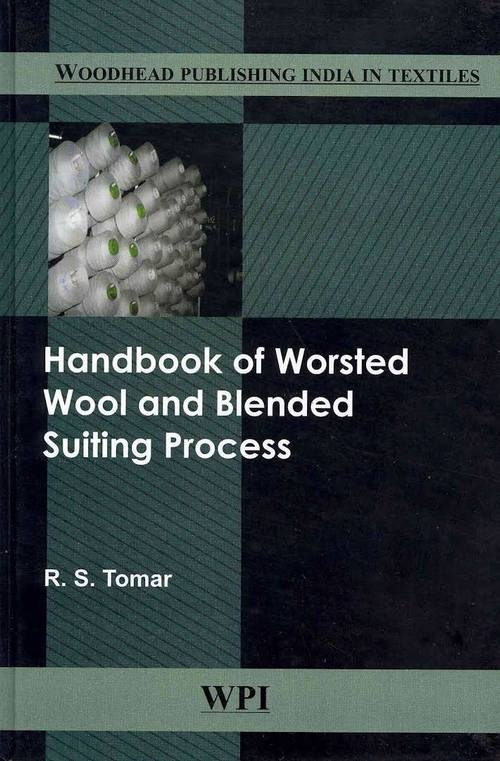
Preface
Textile manufacturing process consists of sub-processes of spinning, weaving, dyeing, and chemical processing. Over the years, worsted wool has been a popular choice for men.s trousers, pleated skirts for women, and both men.s suits and sport jackets. Because worsted wool is so durable, it wells very well and also drapes easily, making it an ideal fabric for all sorts of garments. In this book all processes carried out up to grey fabric stage are explained with visual aids and the quality test procedures are mentioned.
Faults visible in fabric can be back traced to either of these processes. Hence fabric defects have been categorised as spinning, weaving, dyeing and processing faults and also as mending faults arising due to mistakes in the fault removal or mending process. The following treatise describes each fault along with possible causes of generation with visual aids wherever possible. Efforts have been made to cover various fabric faults along with remedial action and fabric swatches.
I am deeply indebted to Shri V. K. Gupta, Works Director, Raymond Ltd., Jalgaon and Shri S. K. Singhal, President . Textiles, Raymond Ltd., Textiles Division, for their valuable and kind support for making this effort successful. This information is based mostly on the knowledge acquired by experience and hard work.
Last but not the least, I am thankful to my dear colleagues, friends for their fruitful and innovative inputs, and my wife Madhubala and all my family members.
R. S. Tomar
Contents
Preface v
1 Introduction to different fibres 1
1.1 What is wool? 1
1.2 Types of wool 1
1.3 Basic quality parameters 3
1.4 Properties of wool 4
1.5 What is Super .X.? 4
1.6 Wool classification 4
1.7 Dyeing wool / polyester and other fibres 5
1.8 What is a product? 7
1.9 Textile fibres and their description 8
1.10 Purpose of blending 10
1.11 Blending 11
1.12 Introduction to fibres which blends with wool 12
2 Fibre to fabric 22
2.1 Fibre to fabric process 22
2.2 Objectives of the process 24
2.3 Worsted carding 25
2.4 Back washing 26
2.5 Combing 26
2.6 Worsted spinning 27
2.7 Warehouse and tops conditioning 27
2.8 Weaving 55
2.9 Mending 70
2.10 Introduction to yarn numbering system 71
2.11 Count conversion formulae 72
2.12 Twist 73
2.13 Supply chain management (SCM) 74
3 Weaves and colour effects 75
3.1 Introduction 75
3.2 Special weaves 78
3.3 Weave and colour effects 81
3.4 Checks 81
3.5 Stripe 84
3.6 Dobby effects 85
4 Finishes 86
4.1 Introduction 86
4.2 Fabric/garment care 89
5 Fabric defects 91
5.1 Introduction 91
5.2 Spinning defects 91
5.3 Spinning faults 92
5.4 Weaving defects 100
5.5 Weaving faults 103
5.6 Mending defects 114
5.7 Dyeing defects 116
5.8 Finishing defects 117
5.9 Fabric care symbols 118
6 Testing procedures 119
6.1 Uster evenness testing procedure 119
6.2 Tensile strength testing procedure 121
6.3 Hairiness testing procedure 123
6.4 Classimat testing procedure 124
6.5 Re-gauging cuts/kg testing procedure 126
6.6 Twist testing 128
6.7 Count testing (count wrapping) 129
6.8 Testing procedure for wrapping of sliver and roving/rubbing 131
6.9 Test procedure for calculating oil% 132
6.10 Testing procedure for determining moisture 133
6.11 Method to conduct ring frame end breakage study 135
6.12 Method to conduct TFO end breakage study 136
6.13 Method to conduct loom operating study 137
6.14 Method of cross-checking of beam gaiting strips 138
6.15 Method of cross-checking of dyed strips 139
6.16 Method of cross-checking of mended pieces 139
References 141
Index 142
